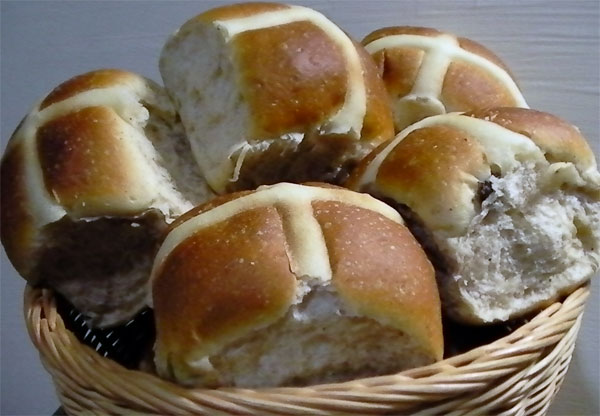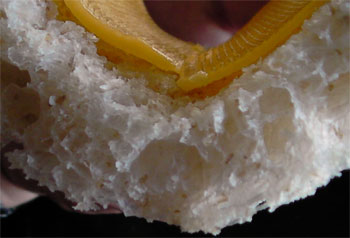Syd's blog
Squid Ink Baguette

This is my version of a local speciality: squid ink baguette. Actually, I am not even sure if this kind of bread was first made in Taiwan, or even in Asia for that matter, but nowadays you can find it in almost any bakery. It is often sold as a sandwich with a seafood filling.
Hot Cross Buns

This made some of the nicest hot cross buns I have ever tasted. I used the same dough as for the Asian Style Pain de Mie but added:
Soft, tender-crumbed, Sourdough

Glenn, inadvertently, threw down the gauntlet this week when he asked a question in his post: How to get a light and tender crumb in sourdough. I took up the challenge (even though I know Glenn didn't mean it that way) and in the process got diverted from what I had originally itended to bake this weekend.
White Sandwich Loaf

Poolish
250g all purpose flour
250g water
1/16 - 1/8 of a tsp yeast (more if it is cold, less if it is hot)
Mix together and leave for 12 hours.
Dough
300g white bread flour
130g milk (scalded)
unsalted butter 6g
10g salt
3g instant yeast
a little less than 1/4 tsp of ascorbic acid
